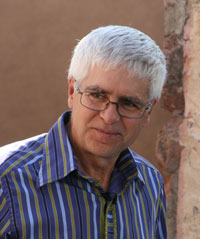 On July 22, 2015, we sat down with David Witt, historian, author, and curator of the Seton Legacy Project and discussed Seton’s journey to the Arctic in 1907. The full interview can be found on David’s page.
On July 22, 2015, we sat down with David Witt, historian, author, and curator of the Seton Legacy Project and discussed Seton’s journey to the Arctic in 1907. The full interview can be found on David’s page.
What was the call to adventure for Seton and the original expedition?
David Witt: Seton was aware of a guy by the name of George Back, who had been up to Aylmer Lake in the 1820s. There were two subsequent expeditions that went there as well—all searching for a giant lake, a lake that might be the size of Great Slave Lake or Great Bear Lake. They were wrong, but that’s one thing Seton went up to establish. Along the way, he discovered two new rivers that had never been mapped before.
He went partly for geographic exploration. In addition, he wanted to see a musk ox for himself. He also wanted to see caribou. He loved caribou. It was one of his favorite animals. A third component was he wanted to reconnoiter that area to see if it had any development possibilities for agriculture. That was his three-part mission…the official part.
The unofficial part, the call to adventure, was that he had never been to the Low Arctic. As a wilderness explorer who spent a huge amount of his life exploring wilderness areas, he’d never been above the boreal forest, and so he wanted to go there for the sheer adventure of it.
I would guess of those four things, probably the sheer adventure of it may well have been the actual motivating factor.
He was accompanied by Edward Preble, a field biologist working for the Smithsonian. They went north of Great Slave Lake, crossed an area called Pike’s Portage at the northeast corner of the lake, and explored a territory that had hardly ever been seen by any people of European descent.
When they took off, they had a couple of First Nations guides who had never been there. So, there were four people on the hardest part of this expedition, going into it almost completely blind. They had a couple of old maps but they were so poor that by the time they found Aylmer Lake, they didn’t realize they’d actually found it.
Seton’s story is interesting because he did a 2,000-mile canoe trip in 1907 at the age of 47. For a 47-year-old from that era to take on that kind of physical challenge is fairly extraordinary. I believe by the end of it, he was completely exhausted. They nearly starved to death at one point. The canoes would capsize occasionally and they’d all be thrown in the river. They were lucky to get out of it.

I loved reading your thoughts David–I can’t wait to see what you find!
LikeLike